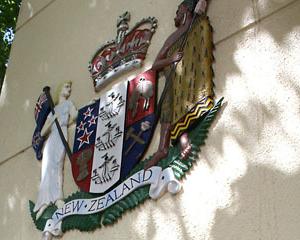
Southern coroner David Crerar supported the view of Maritime NZ in his finding into the deaths by drowning of two pairs of fishermen last year, which was publicly released yesterday.
Bruce Robert Gordon (42), of Te Anau, owner-skipper of the K-CEE, and crewman Darren James Allen (38), of Wairio, both drowned in the Tasman Sea off Rocky Point on Secretary Island, on April 30, 2012.
The K-CEE was overwhelmed in heavy seas and sank.
Kevin John Cosgrove (61), of Dobson, Greymouth, owner-skipper of the Governor, and crewman Nirvana Drew Reynolds (17), of Blackball, both drowned in the Tasman Sea near Yates Point, north of the entrance to Milford Sound, on September 15, 2012.
The Governor became inundated with water and sank while the two men were attempting to recover a trawl net caught on an underwater obstruction.
It was ''unlikely'' either Mr Gordon or Mr Allen wore life jackets and neither Mr Cosgrove or Mr Reynolds wore life jackets, Mr Crerar said.
''The wearing of life jackets by fishermen is voluntary,'' he said.
None of the four bodies has been recovered due to sea conditions, to the frustration of family, friends, police divers and search and rescue personnel.
Mr Crerar acknowledged radio signals in Fiordland were ''sub-optimal''.
However, Maritime NZ is the Government agency responsible for ensuring radio coverage for emergency channels and ''every effort should be made to address this problem.''
The coroner said Maritime NZ in its submission to the provisional finding accepted VHF radio relies on ''line of sight for effective communication'' in Fiordland, but VHF channel 16 was endorsed as the international distress channel.
Mr Crerar said he did not criticise Maritime NZ or the self-funded voluntary co-operative service Fiordland Fisherman's Radio for their roles.
''Each organisation made a significant contribution to the searches for both boats and crew and any deficiencies in radio communications were not causes of the deaths, or circumstances of the deaths,'' he said.
While police accepted there were ''some aspects'' of each search which possibly could have been done better, the police and Maritime NZ would be sent copies of the finding to ensure ''lessons learned are not forgotten, but built on in the future,'' the coroner said.
It was ''probable'' both crews had died before the police were called to begin the searches.
Mr Crerar indicated during the inquest in Te Anau, on April 10 and 11, he may recommend to the Government a legislative change to make the use of automatically activating float-free emergency position-indicating radio beacons (Epirb) and inflatable life jackets compulsory for Fiordland fishermen.
However, Mr Crerar said in his finding a submission from ''an industry expert'' advised him a beacon signal may take two hours or longer to be received and acted upon due to thin satellite coverage over the southwest of New Zealand.
''Epirb are not fail-safe and an Epirb ought to be used and relied on in conjunction with other methods of communication,'' Mr Crerar said.
The Epirb recovered from the K-CEE needed to be manually activated, but had not been switched on and neither had the Epirb on the Governor.
The coroner extended his sympathies and condolences to the families of the men and noted the ''sad death'' of Sharon Ayre, the mother of Mr Reynolds, who died between the dates of the inquest and the date of the finding's release.











